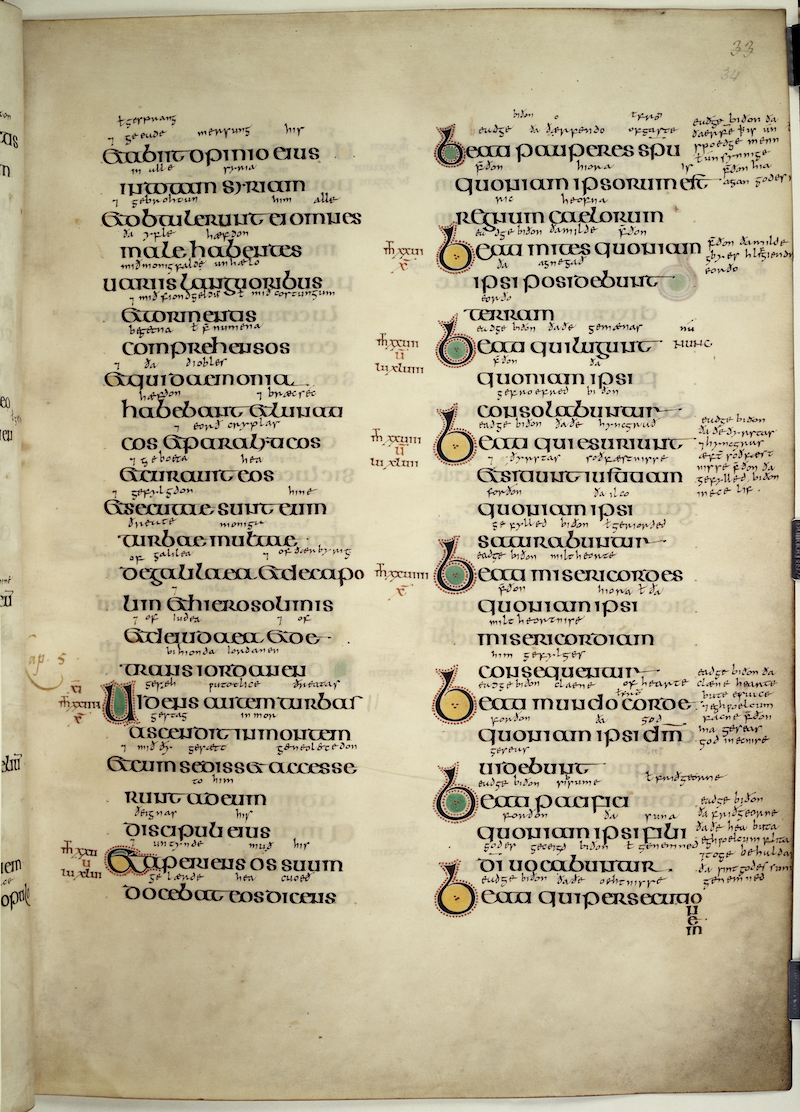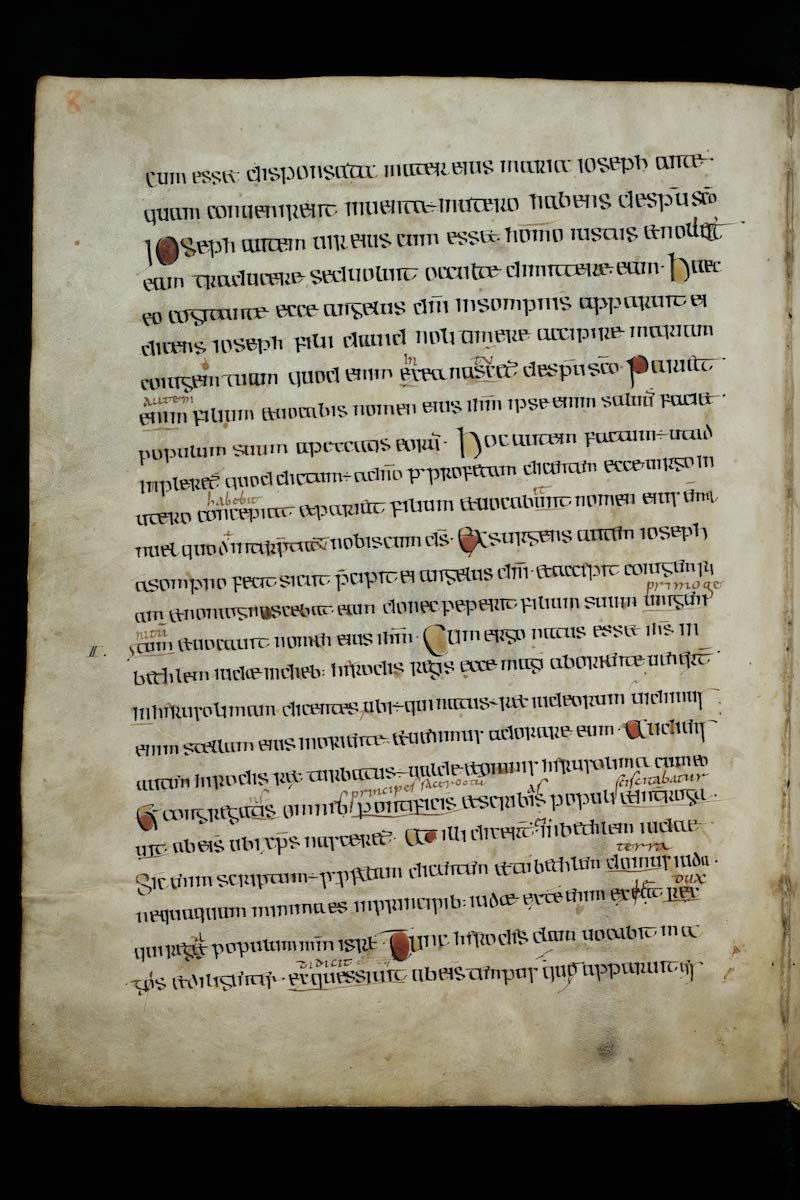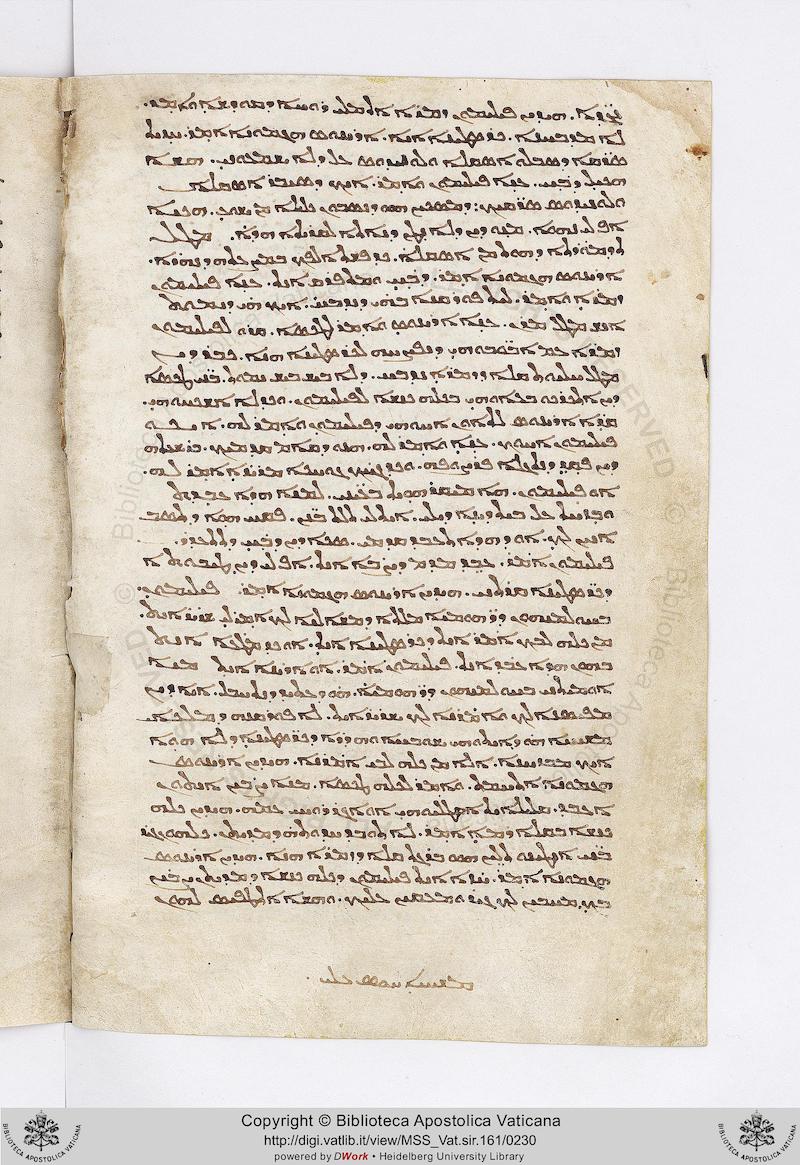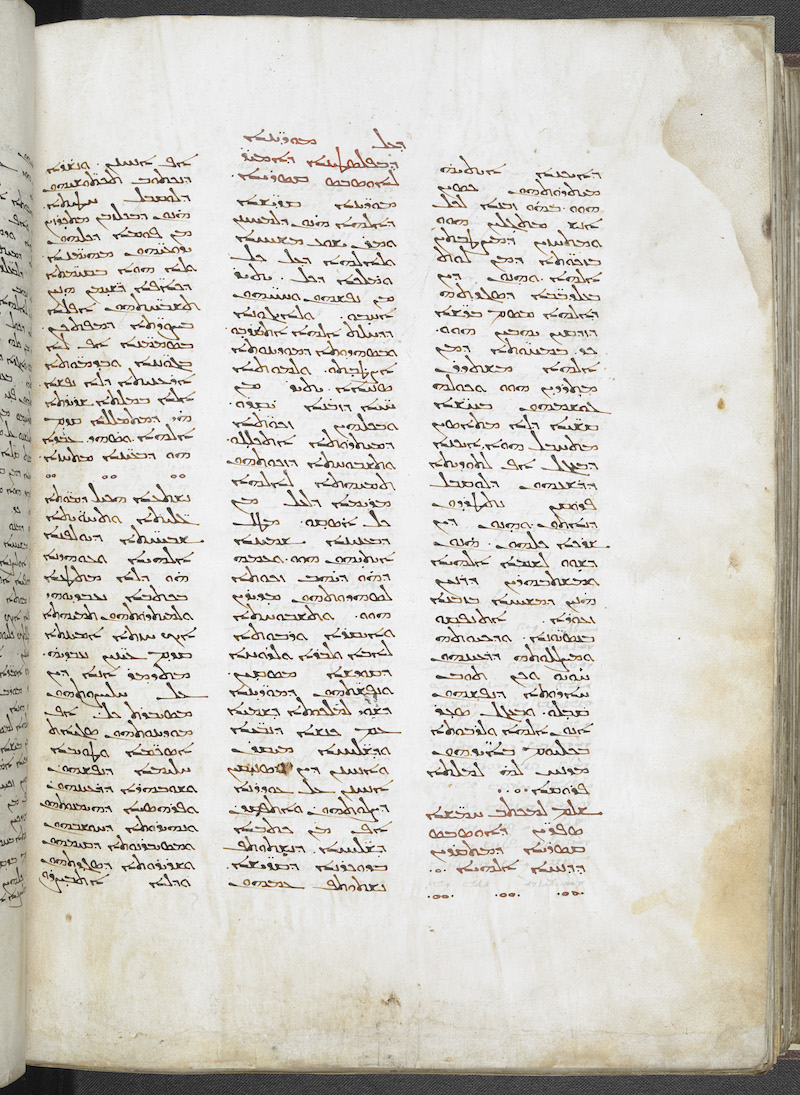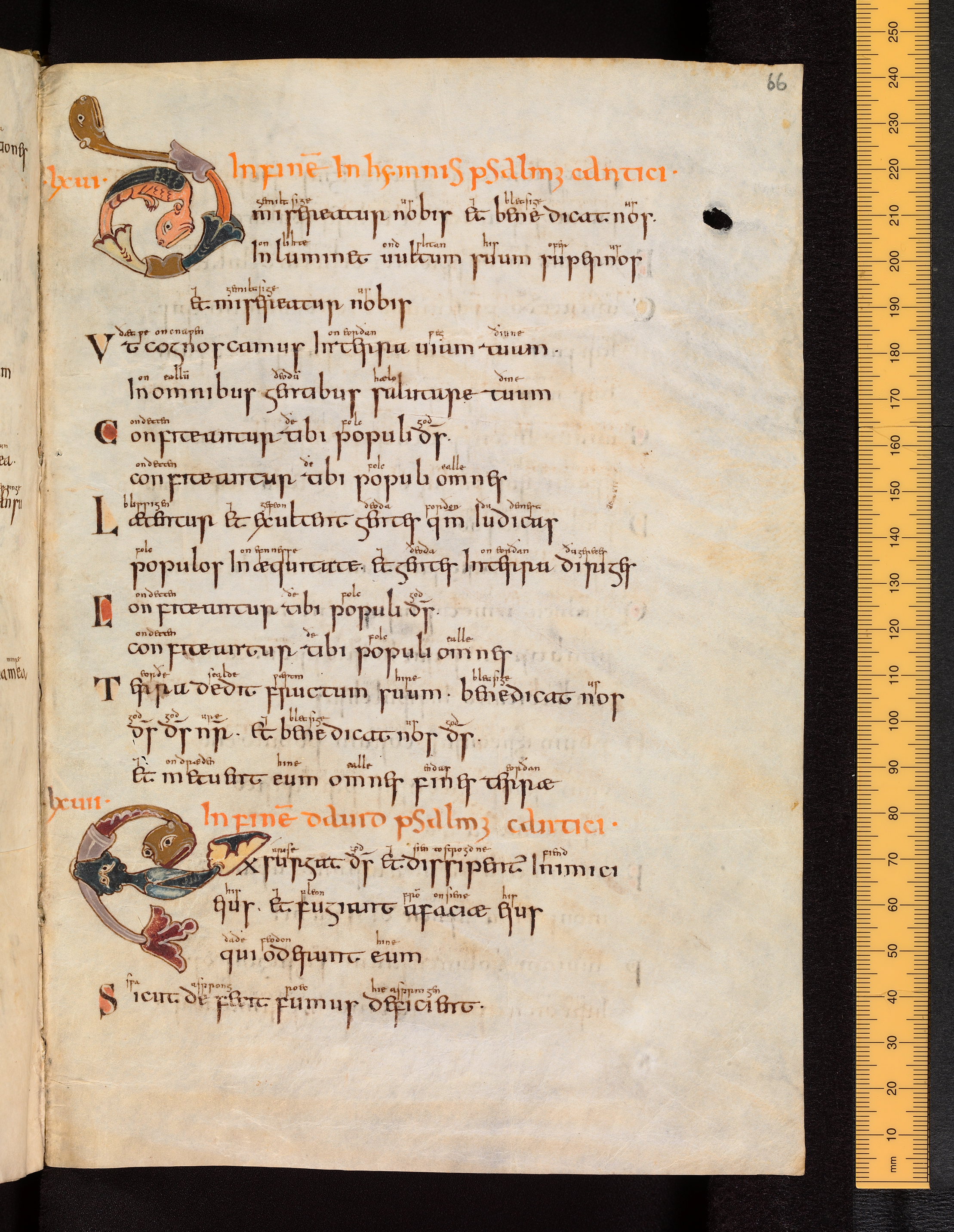
Anglo-Saxon Minuscule, 10th century
-
Title
Psalter -
Text
Psalms 66:1-67:3 -
Language(s)
Latin -
Writing System
Roman -
Script(s)
Anglo-Saxon Minuscule -
Country
Great Britain -
City
Oxford -
Repository
Bodleian Library -
Shelf Mark
Junius 27, fol. 66r -
Common Name
Junius Psalter -
Century
10th century -
Year Range
900-925 -
Place Of Origin
England, Winchester (?) -
Provenance
Given to the Bodleian Library by Franciscus Junius (1591-1677) -
Bibliography
Brenner, Eduard. Der altenglische Junius-Psalter; die Interlinear-Glosse der Handschrift Junius 27 der Bodleiana zu Oxford (1908).
Mechthild Gretsch, "The Junius Psalter Gloss: Its Historical and Cultural Context." Anglo-Saxon England 29 (2000): 85-121.
-
External Facsimile
The Junius Psalter is one of the ten surviving Anglo-Saxon Psalter manuscripts that have complete interlinear glosses in Old English. The Old English gloss is not a spontaneous reaction to the Latin text in this manuscript, but derives from a tradition of glossing of Latin Psalters in Anglo-Saxon England and is related to glosses found in other such manuscripts.
The script of both the main text and the gloss is the variety of Insular Minuscule known as Anglo-Saxon Square Minuscule. The various forms of Anglo-Saxon minuscule share with Irish minuscules an inventory of peculiarly Insular letterforms and abbreviations. Chief among these are the Insular g derived from Half-Uncial; the r with a first stroke descending well below the baseline and a second stroke that bends over to the baseline, like that of n; the long s descending well below the baseline; and the f with a long, low hasta at the baseline. This Anglo-Saxon hand also has an a formed like a u with straight bar across the top. A version of a in the red-inked headings has the same crossbar, but also has a very tall second stroke. E is tall and goes into ligature with the following letter wherever possible – a feature common to many early-medieval scripts.
A generation or two after this manuscript was copied, the Anglo-Saxons would abandon the use of Insular minuscule for texts in Latin, substituting Caroline minuscule for Latin texts and retaining Insular forms only for the vernacular. (No such distinction was imposed in Ireland.)
The general aspect of Anglo-Saxon Square Minuscule is very upright, with long ascenders and descenders, plenty of space between lines, and little variation between thick and thin strokes. The ornamentation takes the form of initials made up of the beasts characteristic of both Germanic and Celtic art, with foliage influenced by Carolingian illumination. The color washes within smaller initials are also common to the various Insular traditions.
Acknowledgements: Described by Carin Ruff
Transcription
(Latin text only)
1 .lxui. in fine(m) in hymnis psalm(us) cantici∙
2 D(eus) misereatur nobis et benedicat nos.
3 inluminet uultum suum super nos
4 et misereatur nobis
5 Vt cognoscamus in terra uiam tuam.
6 in omnibus gentibus salutare tuum
7 Confiteantur tibi populi d(eu)s.
8 confiteantur tibi populi omnes
9 Lætentur et exultent gentes q(uonia)m iudicas
10 populos in æquitate∙ et gentes in terra diriges
11 Confiteantur tibi populi d(eu)s.
12 confiteantur tibi populi omnes
13 Terra dedit fructum suum∙ benedicat nos
14 d(eu)s d(eu)s n(oste)r. et benedicat nos d(eu)s.
15 et metuent eum omnes fines terræ
16 .lxuii. in fine(m) david psalm(us) cantici∙
17 Exsurgat d(eu)s et dissipent(ur) innimici
18 eius. et fugiant a faciæ eius
19 qui oderunt eum
20 Sicut defecit fumus deficient∙
Paleographic Features
1. Line 1 initial: The monsters form an Uncial d. Psalm 66 ought to begin with the word Deus, but the scribe in this instance appears to have left out the eus altogether.
2. Line 1, the fourth word after the initial: the very unusual-looking letter that resembles a curvy f is actually a y.
3. Line 1, fourth word: The 3-shaped abbreviation stands for -us.
4. The a with an extremely tall second stroke is used only in the headings. Compare the scribe's normal a in misereatur, line 2, and the even more flat-topped a at the end of terra in the middle of line 5.
5. The first two words in line 2 are misereatur nobis. Note the difference between the Insular r at the end of the first and s at the end of the second.
6. Tall e with hasta reaching out to join up with the following letter appears in the third and fourth words of line 2 (et benedicat).
7. The last word in line 3, supernos, offers a good opportunity to compare the forms of s, p, and r in this script, and the way the e looks when in ligature with r.
8. The characteristic Insular g appears in gentibus in the middle of line 6.
9. In the rubric (red text) next to the second beast-initial on the page, at the start of Psalm 67, the third word is dauid. The stems of both ds lean way over to the left, in the manner of late Uncial, while the tall a looks almost like a d, leading to confusion.
